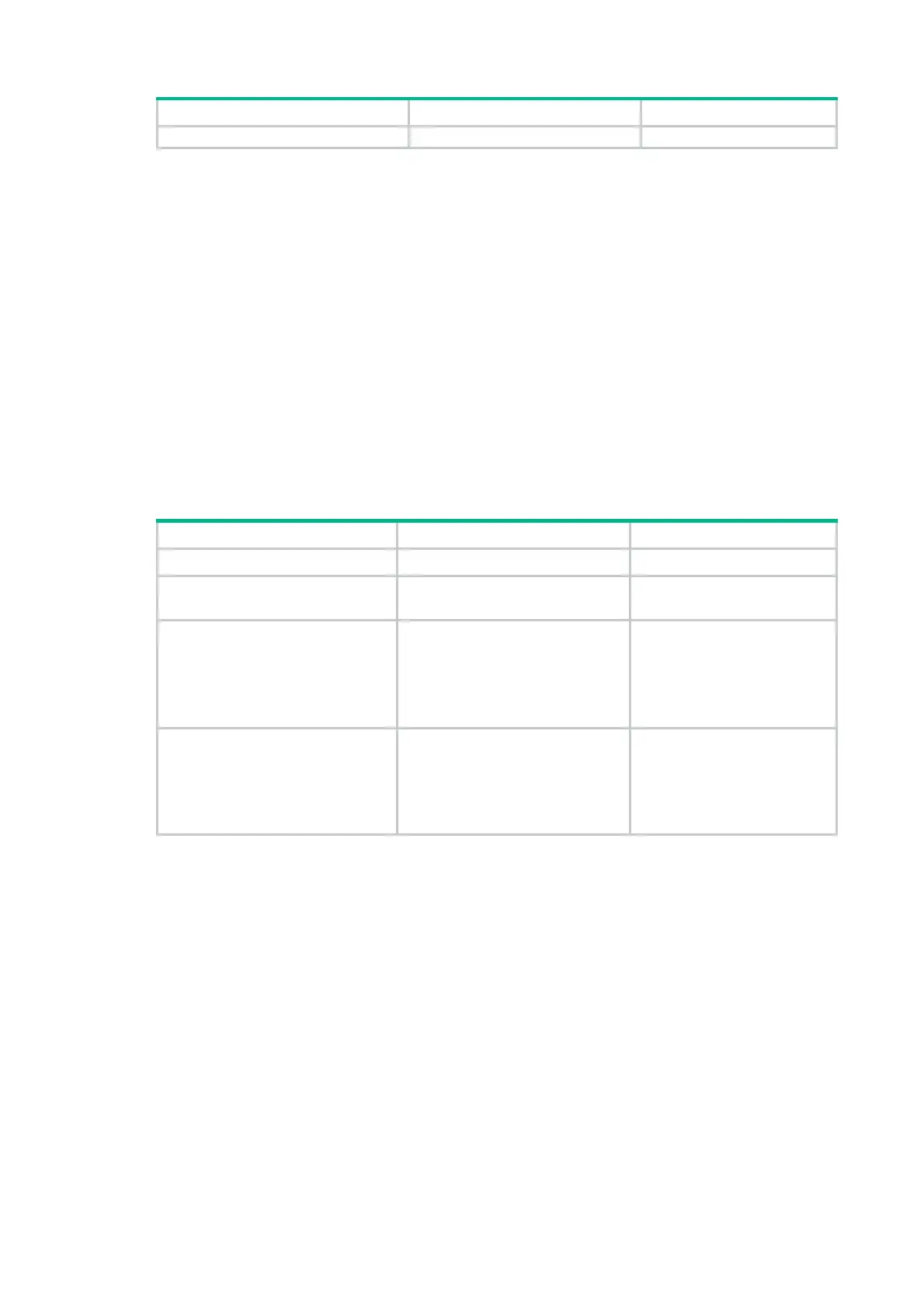46
Step Command Remarks
step.
Configuring a static binding in a DHCP address pool
Some DHCP clients, such as a WWW server, need fixed IP addresses. To provide a fixed IP address
for a client, you can statically bind the MAC address or ID of the client to an IP address in a DHCP
address pool. When the client requests an IP address, the DHCP server assigns the IP address in
the static binding to the client.
Follow these guidelines when you configure a static binding:
• One IP address can be bound to only one client MAC or client ID. You cannot modify bindings
that have been created. To change the binding for a DHCP client, you must delete the existing
binding first.
• The IP address of a static binding cannot be the address of the DHCP server interface.
Otherwise, an IP address conflict occurs and the bound client cannot obtain an IP address
correctly.
• Multiple interfaces on the same device might all use DHCP to request a static IP address. In this
case, use client IDs rather than the device's MAC address to identify the interfaces. Otherwise,
IP address allocation will fail.
To configure a static binding:
Step Command Remarks
1. Enter system view.
system-view
N/A
2. Create a DHCP address pool
and enter its view.
dhcp server ip-pool
pool-name
By default, no DHCP address
pool exists.
3. Configure a static binding.
static-bind ip-address
ip-address
[ mask-length |
mask
mask ]
{
client-identifier
client-identifier
|
hardware-address
hardware-address
[
ethernet
|
token-ring
] }
By default, no static binding is
configured.
To add more static bindings,
repeat this step.
4. (Optional.) Set the lease
duration for the IP address.
expired
{
day
day [
hour
hour
[
minute
minute [
second
second ] ] ] |
unlimited
}
The default setting is 1 day.
Specifying gateways for DHCP clients
DHCP clients send packets destined for other networks to a gateway. The DHCP server can assign
the gateway address to the DHCP clients.
You can specify gateway addresses in each address pool on the DHCP server. A maximum of 64
gateways can be specified in DHCP address pool view or secondary subnet view.
The DHCP server assigns gateway addresses to clients on a secondary subnet in the following
ways:
• If gateways are specified in both address pool view and secondary subnet view, DHCP assigns
those specified in the secondary subnet view.
• If gateways are specified in address pool view but not in secondary subnet view, DHCP assigns
those specified in address pool view.
To configure gateways in the DHCP address pool:
